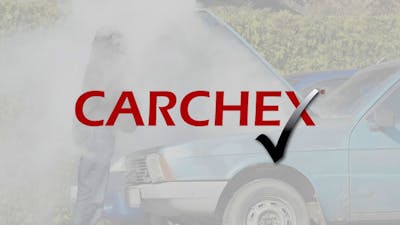Avoid The Vehicle Fluid Flush Scam
When we take our vehicle to a dealer or a local repair shop, the assumption is that the professionals there will follow the manufacturer’s recommendations for maintenance. The truth is doesn't always happen.
Many dealers and repair shops (particularly chains) will try to upsell customers with more services than the manufacturer suggests. One type of upselling that is very common is to suggest a “flush” instead of a drain and fill of various fluids. Transmission fluids are the most common of this type, but shops may also try to suggest flushes of other fluids such as coolant, brake fluid, oil, or power steering fluid.
How the flush game is played
On the service writer’s counter will be a little display. It will show fluids of various colors indicating the results of a flush versus a drain and fill. The flush fluid will be clean and happy. The drain and fill color will be dark, evil and foreboding.
The idea is that the flush is better for your car. After all, the little display seems to show that in no uncertain terms. However, let’s step back and realize that the display may be one of the following:
- Completely fake
- Completely inaccurate
- Intended to be completely misleading
Furthermore, why would we assume that the color of a fluid on a service writer’s desk is any indication of the health of our vehicle or its systems?
Popular Warranty Providers
Do you really need a fluid change at all?
Back in the days of manual chokes and roll-up windows, cars had a pretty long list of fluid changes that needed to be performed at very short intervals. Oil at 3,000 miles, and many of the pricier fluid changes at 15,000, 30,000, 45,000, 60,000… Lather, rinse and repeat. It seemed like every time the odometer clicked past a milestone your car was in for a “major service.”
Times have changed. First, power steering fluid went away. It isn't really a thing anymore. No modern mainstream vehicle uses it anymore. So, changing it is impossible. Next, coolant has evolved to last up to 100,000 miles and is typically only checked and topped off during service visits. Toyota and Mazda don’t recommend changing the transmission in some of their most popular models at all anymore. Oil changes are now stretching past 15,000 miles on some models thanks to better synthetic lubricants and algorithms that monitor how the engine is used.
The upshot of the modernization of our vehicle fleet is that the manufacturers’ recommendations have changed dramatically. Curiously, those posters on the walls of the dealer service areas seem to stay the same - except for the price box which ticks higher and higher.
Be sure you use your owner’s manual as your fluid change guide, not your dealer’s service center’s suggestion of what works best.
Fluid changes - What do manufacturers suggest?
Every car manufacturer supplies its owners with a manual spelling out what needs to be done and when. If yours is now under that wagon wheel table leg in the garage helping to keep it balanced, don't sweat it. They are universally online now. Many are even inside the car’s infotainment system.
This is your guide. There is no general guide for how long transmission fluid lasts. In some models, it is changed at 30K or 60K. In some, it is not. Look at your manual. Also, note that some fluids are changed more frequently depending on how you use the vehicle. For example, if you tow or drive off-road the fluid change schedule may have more frequent changes suggested.
What is a fluid flush?
An engine flush, coolant flush, transmission fluid flush, or any kind of vehicle fluid flush is easy to understand. The dealer has purchased a machine from a company that promotes fluid flushes. The machine is hooked up to your car, and using a pump fluid is forced through areas not intended to be routinely flushed. The sales pitch is that this way removes more of the old, dirty fluid. However, if the car wasn’t designed to be maintained this way, forcing fluid through may cause damage, as the warning below illustrates.
A warning from Mazda
Mazda recently issued a service bulletin to clarify that flushing is not helpful and can be harmful. After owners were returning to dealers with damaged vehicles following fluid flushes, Mazda decided to step up and go on the record on the topic of fluid flushing versus fluid drain and replace. In a Technical Service Bulletin in February, Mazda states in no uncertain terms that fluid flushes are not just unnecessary, and can lead to damage. Here is the main chart that the TSB included:
| Service | Notes |
|---|
Some of our favorite selections from Mazda’s TSB include:
"Engine flushes are unnecessary."
"Contaminated oil from flushing machines may damage the engine and void the warranty."
As you can see, there are some cases where flushing can be used. They include when the owner has added the wrong fluid to the vehicle.
That uncomfortable conversation
Many dealerships are well-run and have your best interests in mind. However, others simply want to sell you services that won’t help keep your car running better, and some may even suggest services that can damage your car. Let the manufacturer be your guide. The manual has all you need to know.
Nobody likes to call anyone a liar. When you take your car to a dealer or to a repair chain for service, read your manual before you go. Understand what work it recommends is to be performed. The dealer or the chain will want to simply list “Perform 30K Service $599” on the work order. Ask what will be included. If fluid changes or flushes not recommended by the manual are included, ask why, and how much less the service will be without that added and unnecessary work. If a flush of any kind is offered, ask to see in the manual where it says that service is required.
Having this uncomfortable conversation can save you hundreds per service visit and thousands over the life of your car. As we often suggest to the Car Talk Community members, one way to avoid uncomfortable conversations with dealers is to avoid them in favor of a trusted independent mechanic.













